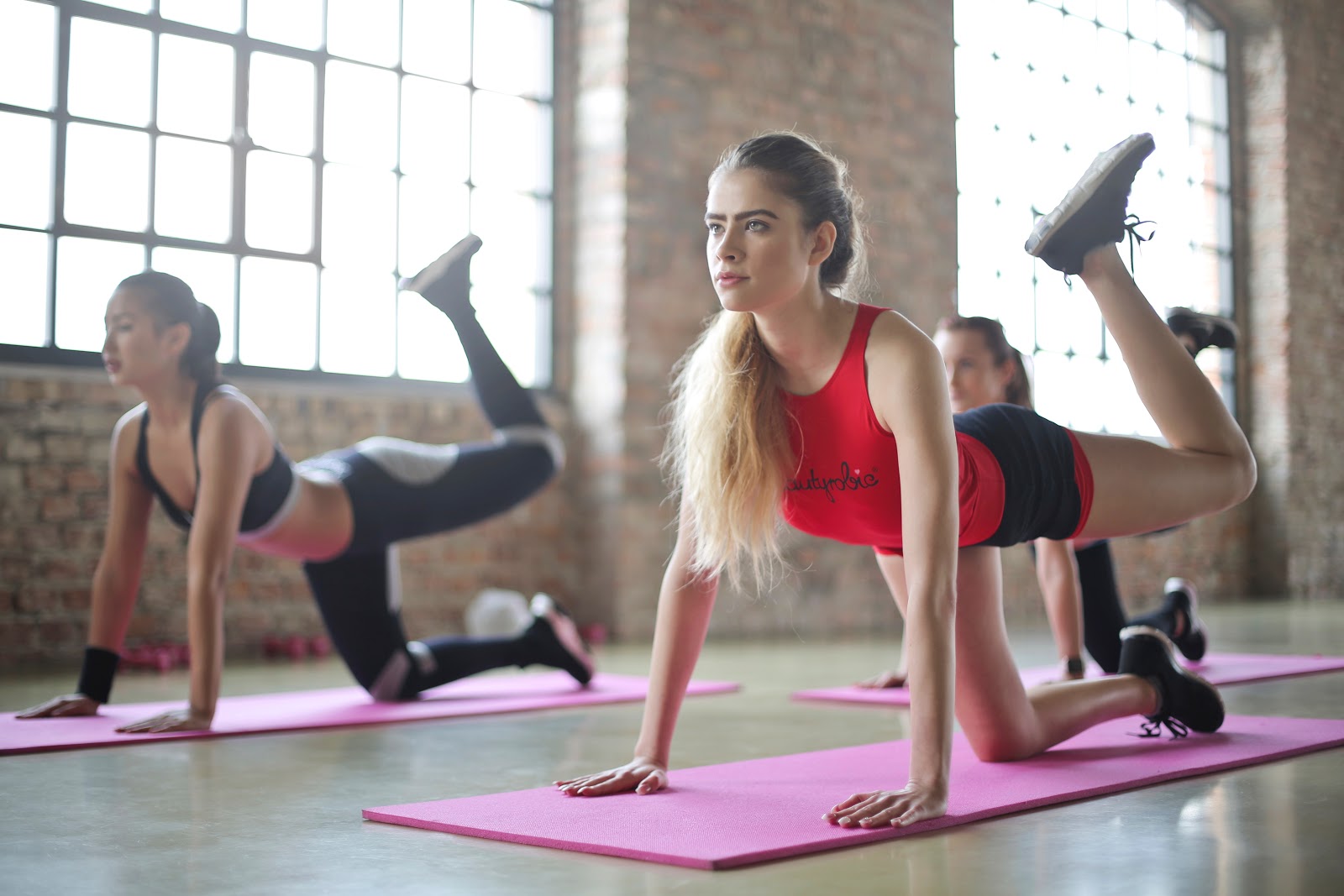You may be familiar with HIIT (high-intensity interval training) and may have even tried a couple of classes. But plyometric exercises are another type of body weight training that is quickly becoming popular among fitness fanatics.
Also referred to as “plyo” or “jump training,” plyo is often mistaken for HIIT, but despite both greatly increasing your heart rate, their targets are quite different.
In this article, you’ll learn about plyometric exercises and how they differ from high-intensity interval training. You’ll also discover the potential benefits of plyometrics and which specific exercises work well, especially when combined with a keto diet.
What Are Plyometric Exercises?
Plyometrics is a type of high-impact training that focuses on increasing muscle power, strength, and agility. By performing explosive movements that stretch and contract your muscles, you can boost your strength and speed.
This type of training is common among Olympic and high-performance athletes and is used to help them improve their body composition, vertical jump height, and lower limb strength[*].
Plyometric training is also a good cardio workout that can help you burn calories and increase your strength and speed, making for a perfect match if you’re a keto follower who wants to get in excellent physical condition[*][*].
Even though plyometric exercises focus primarily on developing the lower body, a complete and well-rounded plyo workout should include all muscle groups.
Is Plyo the Same as HIIT?
While plyometrics and HIIT are body weight workouts that use similar exercises and movements, they do have some distinctions.
- HIIT consists of short intervals of intense cardio exercises, intertwined with very short periods of rest. This type of training can improve cardiovascular fitness, promote fat burning (even in the hours following your training) and increase muscle strength, jump performance, and endurance[*][*][*].
- Much like HIIT, plyo pivots around high-impact exercises and explosive power. But unlike HIIT, it doesn’t necessarily restrict workouts with breaks between sets. It’s more about giving 100% of your energy during the exercise repetitions.
- Plyo focuses more on explosiveness rather than endurance and includes movements that improve the elastic capacity and quickness of your muscles. This training program can help you become stronger, faster with quicker reflexes[*].
Plyometric Training and the Keto Diet
If you want to give plyometric training a go, then the keto diet might be the most suitable approach to support your health goals.
One of the best things about the ketogenic diet is that it’s highly adaptable to your way of living.
The targeted keto diet (TKD) and the cyclical keto diet (CKD) are variations of the standard high-fat, low-carb keto diet. These alternative versions assist those who train hard and are looking to develop physical performance.
The targeted keto diet allows for some extra carbs around your workout times. You can up your carb intake within one hour before or after your fitness routine to help fuel your body. This version falls between a standard keto diet and the cyclical keto diet, and it can support those leading more active lifestyles.
If you’re a professional or serious athlete, then the CKD might be the perfect match to help you perform at your best. In this keto variation, you’ll be increasing your carb intake once or twice a week (also known as carb loading) so you can endure more intense workouts and still get all the benefits of ketosis.
Followers of the TKD or CKD may also benefit from keto-friendly supplements, such as the Perfect Keto Perform Sports Drink. This supplement combines natural ingredients, such as BHB and MCTs, that work synergistically with your body to power your exercise routine.
Just remember that not all supplements are created equal, so it’s vital to choose one that’s made with non-harmful ingredients or hidden carbs.
11 Exercises for Complete Plyometric Training

While plyometric exercises focus primarily on the glutes and lower body muscles, you should incorporate some movements that work your core and upper body. Below you’ll find a compilation of 11 exercises that are often part of a plyo program.
Lower Body
Try some of these lower body exercises that will strengthen your glutes, quads, hamstrings, calves, and hip-flexors.
#1: Box Jumps
To complete this exercise, you’ll need a sturdy box or bench that won’t budge. Start with a 6-inch height and then go higher once you start developing more strength and agility. Stand in front of the box and get into a squatting position. Harnessing all the power from your hamstrings and heels, jump on top of the box with both feet. To get back down, either jump backward or simply step down.
#2: Burpees
Begin in a standing position with your feet together. Then lower your body into a deep squat and place your hands on the ground. Jump both legs backward into a full plank position, with your arms stretched and your back straight. Jump your feet back to their original position, stand up, and jump with your arms stretched towards the ceiling.
#3: Jump Lunges
To complete this exercise efficiently, start in a forward-lunge position with your right foot forward. Using all your hamstring power, straighten your right leg and jump upwards, taking your feet off the ground. While you’re mid-air, switch your legs so you’ll land with your left foot forward and left knee bent.
#4: Skater Jumps
For this drill, you’ll start by placing all your weight on your right leg and slightly bend your right knee. Cross your left leg behind your right leg and slightly touch the ground with the tips of your toes. Slightly lower your body down to create momentum and hop to your left, landing on your left foot and crossing your right leg behind you. Keep hopping from side to side as if you were mimicking an ice skater. Your arms should assist by coordinating with your legs.
#5: Squat Jumps
Start in a standing position, with your feet positioned a little wider than your shoulders. Lower yourself into a squat position. Using all your explosive power, propel your body upwards and as high as you can, with your arms stretched towards the floor.
#6: Tuck Jumps
Starting with your feet hip-width apart. Hop both feet off the ground and land as softly as you can. Once you start to gain momentum, you’ll want to engage your core and get your knees as close as possible to your chest.
Core
Strengthening your core can improve your posture, increase your balance, and prevent back pain and other types of injury[*].
#1: Donkey Kicks
To perform donkey kicks, you should start in a deep squatting position, placing your hands on the ground and positioned under your shoulders. Engaging your core, kick both your legs up at the same time, bend your knees, and try to bring your heels towards your glutes.
#2: Mountain Climbers
Start in a plank position, with your arms straight and your core tightly engaged. Bend your right knee, move it towards your chest, and then place it back at its starting point. Repeat the movement with your opposite leg and continue switching, as if you were trying to run horizontally.
#3: Plank Jacks
This exercise is a cross between jumping jacks and a standard plank. Start in a plank position — keep your arms straight and your core engaged. Jump your legs and feet outwards, keeping your legs straight and then jump again to return to the starting position.
Upper Body
Upper body exercises can help you develop stronger biceps, triceps, abs, and shoulders. Developing these muscle groups may be one way to take your workouts to the next level.
#1: Plyo Push-Ups
You most likely know this exercise as the clapping push-up. In this routine, start in a classic plank position and lower your elbows to the sides of your torso. As you push up, use all your stamina and push off the floor as high as you can. When you’re mid-air, quickly clap your hands and return them to their original position.
#2: Push-Up Jacks
Push-up jacks are a combination of jumping jacks and push-ups. To start, place yourself in a standard push-up position. As you bend your elbows and lower your body, quickly jump your legs and feet outwards and wider than shoulder-width. When you push up, straighten your arms and jump your legs to their starting position.
Safety Tips for Plyometric Exercises

If you’re new to exercise and you want to incorporate plyometrics into your training routine, start slowly. The risk of injury can be high when you’re performing these exercises at high intensity, especially if you’re not sure about proper form.
As with any exercise that requires jumping, always aim for soft landings to prevent any muscle, joint, or tendon complications. This should become easier with time and practice.
Take the time to learn how to do every exercise the correct way, and if you have any doubts, don’t hesitate to talk to a certified personal trainer or fitness instructor.
Having a proper warm-up before you start your plyometric workout is essential to help prevent straining or injury.
If you want to become more active and add body weight training to your workout program, consider checking out HIIT as it’s not as explosive as plyometric exercises. Once your strength and resistance increase, you can start to introduce elements of plyo into your fitness routine.
Plyometrics Help You Increase Speed, Stamina, and Strength
Plyometric training is a great addition for those who already lead a very active lifestyle and want to take their fitness goals to the next level.
What’s more, if you’re following a keto diet, this type of program can burn calories, support weight loss, and promote optimal health.
To learn more about ketosis, workouts, and the best training programs to support your keto lifestyle, consider checking out these articles: